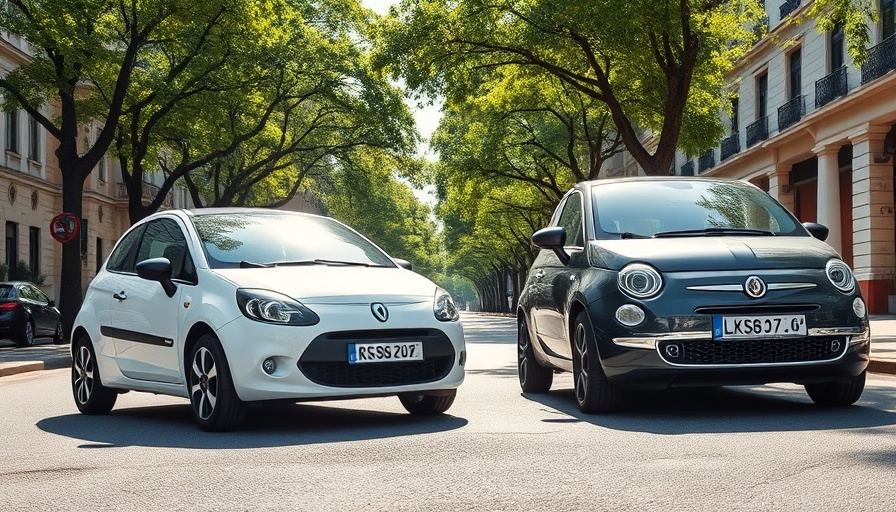
Which Compact EV reigns supreme: Renault 5 or Fiat 500e?
In the market of compact electric vehicles (EVs), style and practicality collide. The introduction of the Renault 5 and the Fiat 500e has homeowners and commuters buzzing with excitement. With innovative features, appealing designs, and competitive pricing, these models are at the forefront of the EV revolution.
The Renaissance of Retro: Aesthetic Appeal
The Renault 5 is basking in the glow of nostalgia, reviving a classic design that once shaped the city car landscape. This electric supermini bridges comfort with retro aesthetics, attracting drivers looking for style without sacrificing modern tech. Starting at an attractive price of £22,995, its unique design gives it an edge over other city cars and aligns with the contemporary push towards electrification.
On the other hand, the Fiat 500e also channels retro vibes, confirmed by its cute, compact form that effortlessly tackles urban environments. While its price point is higher—beginning at £24,995—the 500e’s appeal comes from its hallmark charm. Yet, as competition heats up, Fiat must consider improving performance while maintaining that vintage allure to appeal to new EV drivers.
Performance Showdown: Power Meets Efficiency
The Renault 5 boasts a robust 148bhp electric motor with a range of 251 miles, outshining the 116bhp in the Fiat 500e, which is limited to 199 miles. The Renault’s efficiency of 4.1 miles/kWh surpasses the Fiat's 4.4 miles/kWh, highlighting its superiority in daily commuting scenarios. City driving requires both agility and capability, and both models shine in this respect; however, drivers will find the Renault provides more headroom for longer journeys.
This advantage can potentially lead to lower running costs and a better experience on both city streets and highways, benefits that are attractive to car buyers assessing their options today.
Practical Insights: Space and Comfort Considerations
Driver comfort and convenience remain paramount in the ongoing battle for market dominance. The Renault 5, equipped with five doors, facilitates easier access to the back seats—ideal for families or anyone needing to haul passengers regularly. In contrast, the Fiat focuses on compactness, measuring shorter and lighter, making it a nimble player in tight urban spaces.
Nevertheless, its limited rear space can pose challenges for adults on longer trips—a feature critical for car owners considering family use. The boot space also favors the Renault, offering 326 liters compared to just 185 liters in the Fiat. Such comparisons underscore how car enthusiasts balance style and utility in their buying decisions.
A Buyer’s Dilemma: Which Electric Vehicle is Right for You?
When considering the Renault 5 and Fiat 500e, a consumer's preferences guide their decision. For those drawn to bold aesthetics, tech integration, and robust city performance, the Renault 5 is aptly priced and equipped. However, if classic appeal and compact sizing are more vital to the buyer's needs, the Fiat 500e still offers significant charm.
Retailers and car brokers must stay abreast of preferences in the growing EV landscape, as a clear understanding of market trends will drive sales strategies and customer engagement.
Conclusion: Embracing the Future of Mobility
With the surge of electric vehicles, both the Renault 5 and Fiat 500e stand as stalwarts of modern automotive engineering. Their ability to captivate car enthusiasts—from the tech-savvy buyer to the everyday commuter—speaks to the industry's evolution. Whether one chooses performance or compact charm, both vehicles contribute to a sustainable future in urban mobility.
Consider your precise needs—style, functionality, or a mix—and make an informed choice. As the electric vehicle market grows, ensuring the right fit for drivers remains integral to success. Explore more about these models and their advantages to make your next investment in personal transportation.
 Add Row
Add Row  Add
Add 




 Add Row
Add Row  Add
Add 

Write A Comment